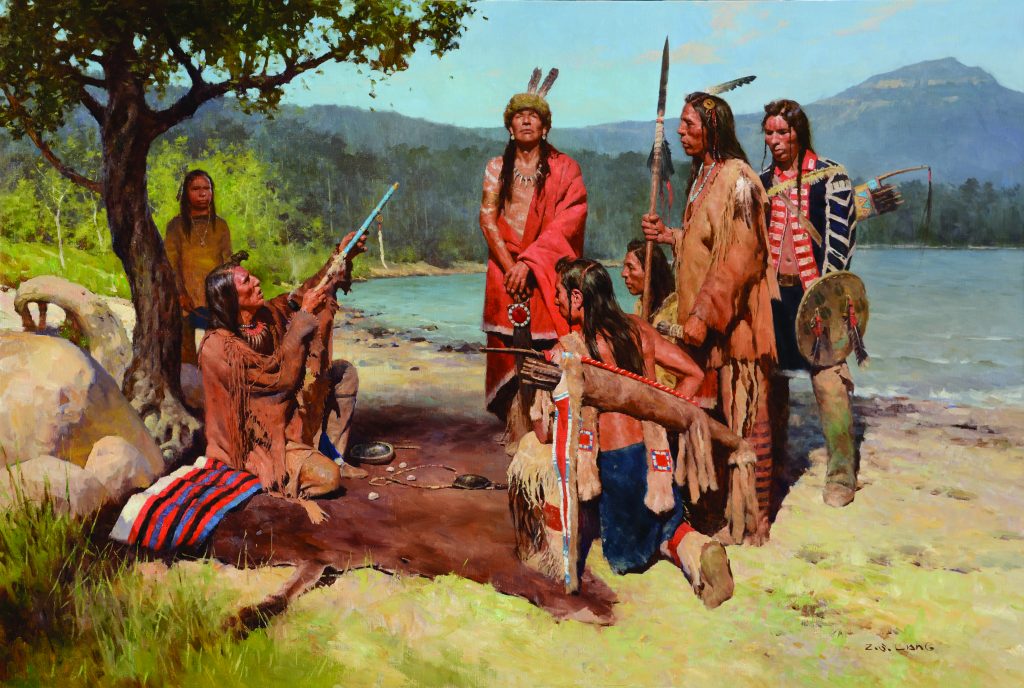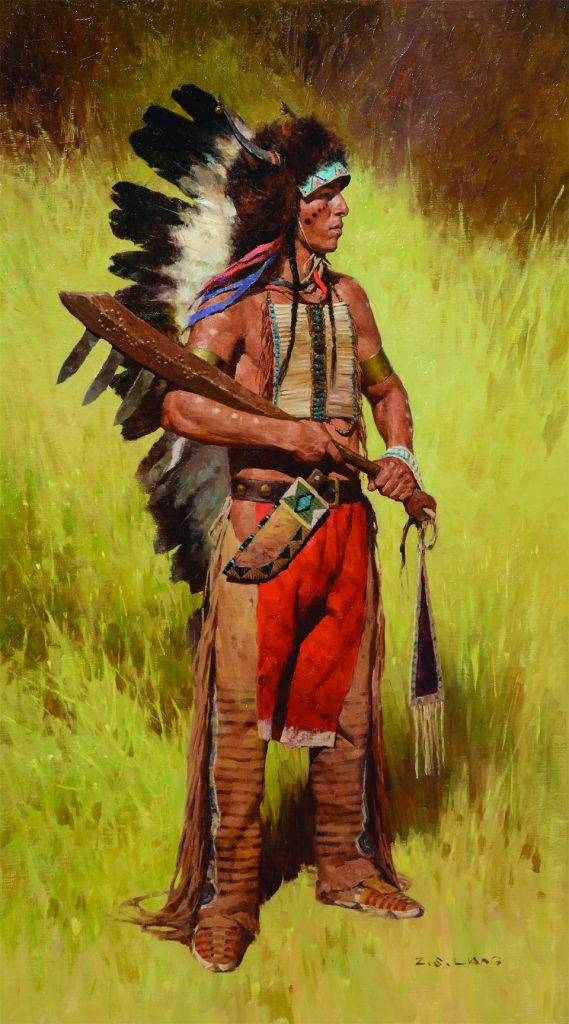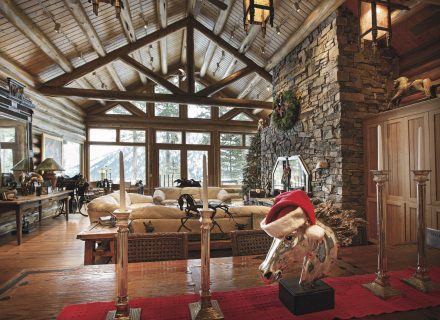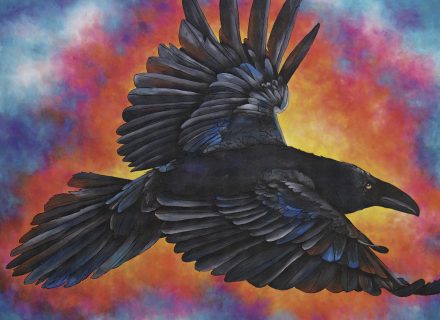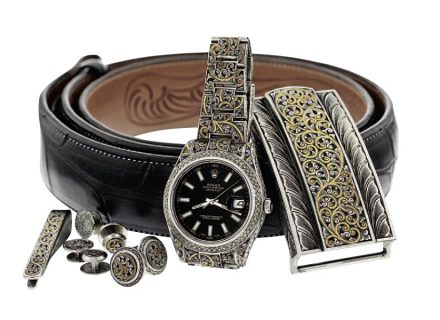It’s a long way from childhood poverty in the 1950s China of Chairman Mao to the American dream in the affluent Los Angeles suburb of Agoura Hills. The talented paintbrush of Z.S. Liang has taken him on that remarkable journey. Today that artistic trek takes viewers of his award-winning oil paintings back in time, for a close-up look at the lives of the Plains Indians of the 19th century. “I try to record the Indian as a hero, as a positive figure,” Liang says at his home studio.Whereas Frederic Remington’s narratives featured frontiersmen caught in a desperate last stand, Liang’s focus [is] on the Native warriors encircling those intruders in a desperate fight for their very way of life. The images are packed with historical detail, like the circle a brave would paint around the eye of his war horse. “That means a horse can see better,” Liang explains. “The stripes on a horse mean ‘counting coup’ — touched the enemy. All this indicates a great chief, not an ordinary person.”
Liang has been drawing since he was old enough to pick up a pencil. Creativity was in the genes: His father was an artist; his mother, a musician. As a boy of 6, his drawing of a local celebration was published in a magazine. That was in 1959, during an era of limited and suspicion-filled relations with Communist China. But as a child, Liang never felt oppressed. “When you live there, you don’t feel it,” he says. “Later on, when I came here, I saw the difference.”
He attended Beijing’s Central Academy of Fine Arts before coming to America in 1982 to pursue a bachelor of fine arts in painting at Massachusetts College of Art (now Massachusetts College of Art and Design) and an MFA in painting at Boston University. By the following decade, the future American citizen was a successful and award-winning portrait and commercial artist.
A visit to a living-history museum outside of Boston would forever change the focus of Liang’s art — and the direction of his life. At the Plimoth Plantation, he was fascinated by Native Americans realistically portraying the Wampanoag Indians of the 1600s. “It opened a new world,” Liang says. “And from there I just learned so much about the Indian.”
His work ever since has focused primarily on the final century of the free-roaming Lakota, Arapahoe, Blackfeet, and Cheyenne — those traumatic years of change on the Great Plains between the days of Lewis and Clark and the final shots of the Indian wars. The painter has visited many reservation homelands of those tribes, met their elders, and participated in their ceremonies. Adorning his home studio are pieces collected on those trips that look as if they date from the 1800s. The buckskin war shirts, headdresses, modified Winchesters, medicine bags, and other items serve as accurate models and lend the authenticity that pervades Liang’s canvases. Most are re-creations made by modern Native artists, but Liang has even made some replicas himself. “I have to learn to make them to understand their way of life,” he explains. “I try to make [everything] as real as possible — all the customs, the details. As much as possible, it’s real.”
Liang’s paintings take you inside the villages, the lodges, and the families of that bygone era, portraying the people who followed the buffalo as the unique individuals they were. He might paint a young family in a busy village showing off their newborn son, a grandfather encouraging a departing soldier-warrior, or a mother teaching her young daughter to sew. Domestic scenes like these give way to representations of the dramatic conflict that once raged across the plains. A painting that portrays a galloping decoy of horseback warriors leading the hated bluecoats into a trap brings to mind something Sitting Bull’s great-grandson Ernie LaPointe observed about Liang’s work: “The strokes of his paintbrush tell our story. Z.S.’s paintings capture the true images of his subjects.”
You’ll find those words in Z.S. Liang: Native Trails, Fresh Tracks, the first retrospective book on the artist. In its pages and on his canvases, you can still travel back to the days when the buffalo, and those who followed them, were free.
Z.S. Liang is represented by Trailside Galleries in Jackson, Wyoming. Visit the artist online at liangstudio.com.
Photography: Images courtesy the artist
From our November/December 2020 issue.







